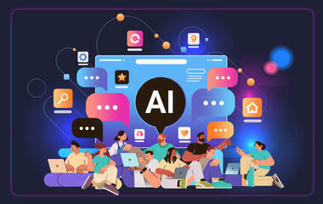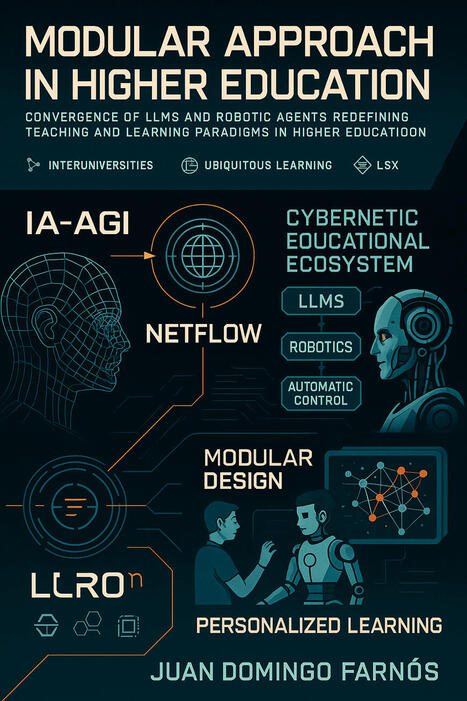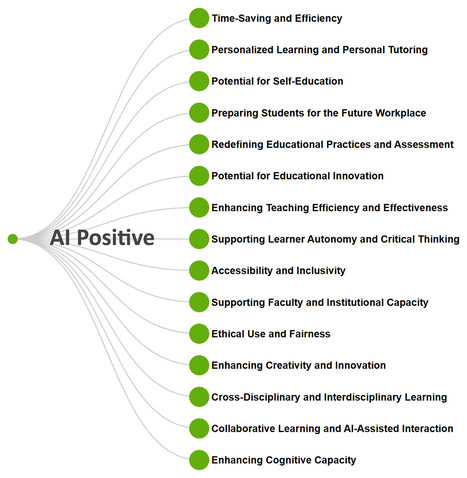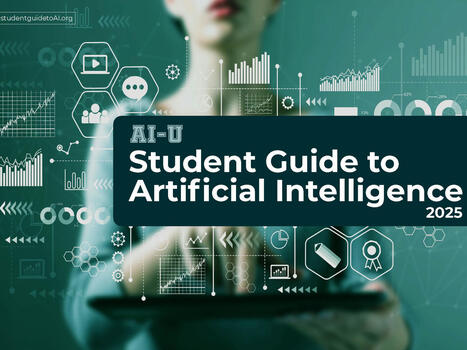La IA Generativa tendrá un impacto notorio en los empleos de oficina dentro de los sectores de servicios altamente calificados, que por lo general ocupan personas con educación universitaria. A diferencia de las oleadas anteriores de las tecnologías digitales, que principalmente permitían acelerar tareas rutinarias o hacer predicciones mediante el reconocimiento de patrones de datos, la capacidad de la IA generativa para sintetizar y generar ideas y contenidos se cruza con una parte significativa de las tareas que requieren las ocupaciones de oficina.
Follow, research and publish the best content
Get Started for FREE
Sign up with Facebook Sign up with X
I don't have a Facebook or a X account
Already have an account: Login

New Learning Ecologies, Instructional Design, EdTech, eLearning, mLearning & more...
Curated by
Edumorfosis
 Your new post is loading... Your new post is loading...
 Your new post is loading... Your new post is loading...
|
adriaansierra@gmail.com's comment,
May 26, 1:33 PM
Bajo mi punto de vista, la inteligencia artificial puede aportar mucho al aula, pero no debemos olvidar que educar es también un acto humano. No basta con personalizar contenidos: la empatía, la mirada atenta del docente y el vínculo con el alumnado son insustituibles. Usar la tecnología como herramienta de apoyo está bien, siempre que recordemos que lo esencial en la educación sigue siendo lo humano.
adriaansierra@gmail.com's curator insight,
May 26, 1:33 PM
Bajo mi punto de vista, la inteligencia artificial puede aportar mucho al aula, pero no debemos olvidar que educar es también un acto humano. No basta con personalizar contenidos: la empatía, la mirada atenta del docente y el vínculo con el alumnado son insustituibles. Usar la tecnología como herramienta de apoyo está bien, siempre que recordemos que lo esencial en la educación sigue siendo lo humano.
|






![[PDF] La IA en la Educación: Los futuros que nos esperan | Edumorfosis.it | Scoop.it](https://img.scoop.it/2iM4mKWcv5xduf7KMwBjwjl72eJkfbmt4t8yenImKBVvK0kTmF0xjctABnaLJIm9)
![[Opinion] AI will destroy Critical Thinking in K-12 | Edumorfosis.it | Scoop.it](https://img.scoop.it/gyujRaIGTHCcPSyWoBykBDl72eJkfbmt4t8yenImKBVvK0kTmF0xjctABnaLJIm9)





![[PDF] Are university teachers ready for GenAI? Unpacking faculty anxiety in the ChatGPT era | Edumorfosis.it | Scoop.it](https://img.scoop.it/bMmoA39zvvJlXC7Q99ioEjl72eJkfbmt4t8yenImKBVvK0kTmF0xjctABnaLJIm9)








![[PDF] The effect of ChatGPT on students’ learning performance, learning perception, and higher-order thinking: Insights from a meta-analysis | Edumorfosis.it | Scoop.it](https://img.scoop.it/Ddw97hbwQ3Y6dniQfNhAmjl72eJkfbmt4t8yenImKBVvK0kTmF0xjctABnaLJIm9)

![[Anthropic Education Report] How university students use Claude | Edumorfosis.it | Scoop.it](https://img.scoop.it/ssLfFiVxVpz7Yb0ZilM2fjl72eJkfbmt4t8yenImKBVvK0kTmF0xjctABnaLJIm9)






